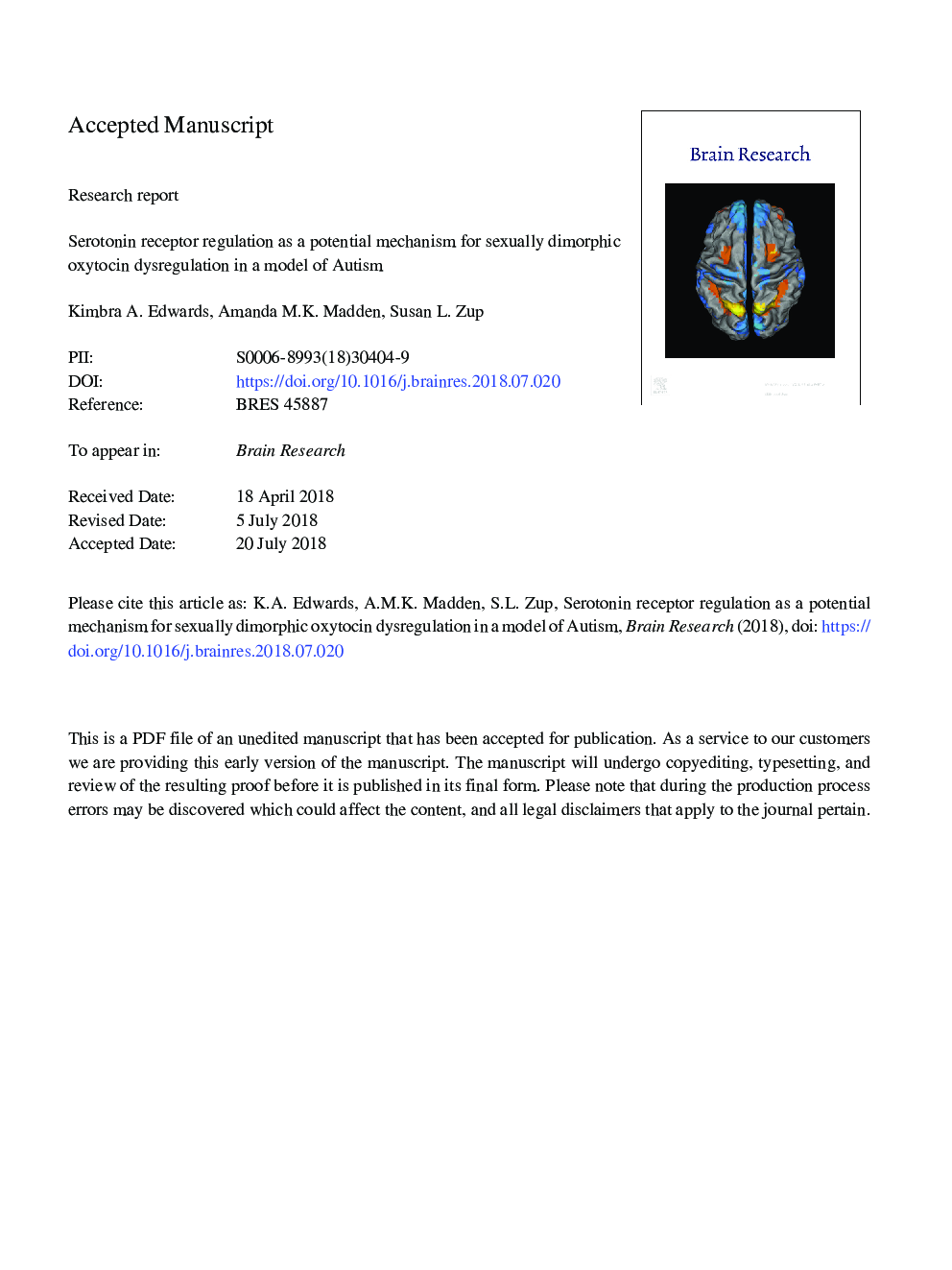| کد مقاله | کد نشریه | سال انتشار | مقاله انگلیسی | نسخه تمام متن |
|---|---|---|---|---|
| 8839608 | 1613743 | 2018 | 25 صفحه PDF | دانلود رایگان |
عنوان انگلیسی مقاله ISI
Serotonin receptor regulation as a potential mechanism for sexually dimorphic oxytocin dysregulation in a model of Autism
ترجمه فارسی عنوان
مقررات گیرنده سروتونین به عنوان یک مکانیسم بالقوه برای اختلال تحریک جنسی اکسی توسین در قالب یک مدل از اوتیسم
دانلود مقاله + سفارش ترجمه
دانلود مقاله ISI انگلیسی
رایگان برای ایرانیان
کلمات کلیدی
موضوعات مرتبط
علوم زیستی و بیوفناوری
علم عصب شناسی
علوم اعصاب (عمومی)
چکیده انگلیسی
Perinatal administration of serotonin (5HT) agonist 5-methoxytryptamine (5MT) induces developmental hyperserotonemia (DHS; elevated blood serotonin) and produces behavioral and neurochemical changes in rats relevant to Autism Spectrum Disorder (ASD), such as oxytocin dysregulation. Disruption of the oxytocin system may underlie many of the social deficits present in ASD individuals, thus we investigated the mechanism(s) underlying DHS-induced oxytocin dysregulation. The most parsimonious mechanism of 5HT action would be alteration of 5HT receptors on oxytocin cells; 5HT is known to influence cell survival as well as influence oxytocin release via 5HT1A and 5HT2A receptors, which co-localize in oxytocin-expressing (OXT+) cells in the paraventricular nucleus (PVN) of the hypothalamus. We report that both male and female DHS rats have a lower percentage of OXT+ cells co-localized with excitatory 5HT2A receptors than control animals, while only DHS females have a higher percentage of OXT+ cells co-localized with inhibitory 5HT1A receptors compared to controls. Importantly, DHS also reduces the number of OXT+ cells in the PVN of adult male, but not female, rats. This pattern suggests that females, but not males, can regulate 5HT receptors in response to DHS in a manner that promotes oxytocin cell survival and functional efficiency. In addition, it has been previously reported that DHS alters normal juvenile play, especially in males, thus we also tested play partner preference among juvenile control and DHS males. Sex differences observed using the DHS model of ASD add to its validity, given the pronounced male sex bias in the prevalence of ASD, and emphasize the need for inclusion of both sexes in ASD research.
ناشر
Database: Elsevier - ScienceDirect (ساینس دایرکت)
Journal: Brain Research - Volume 1701, 15 December 2018, Pages 85-92
Journal: Brain Research - Volume 1701, 15 December 2018, Pages 85-92
نویسندگان
Kimbra A. Edwards, Amanda M.K. Madden, Susan L. Zup,
